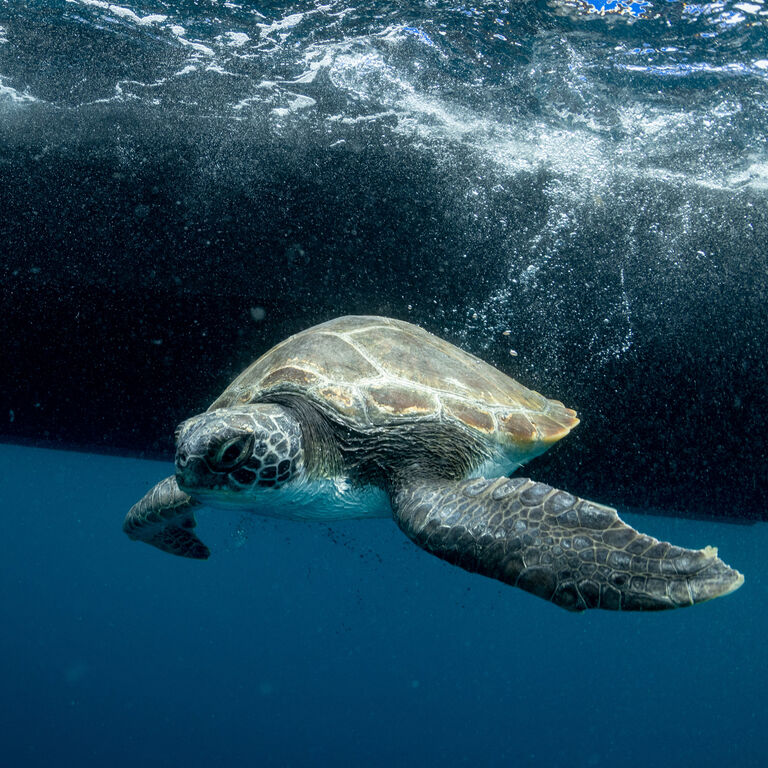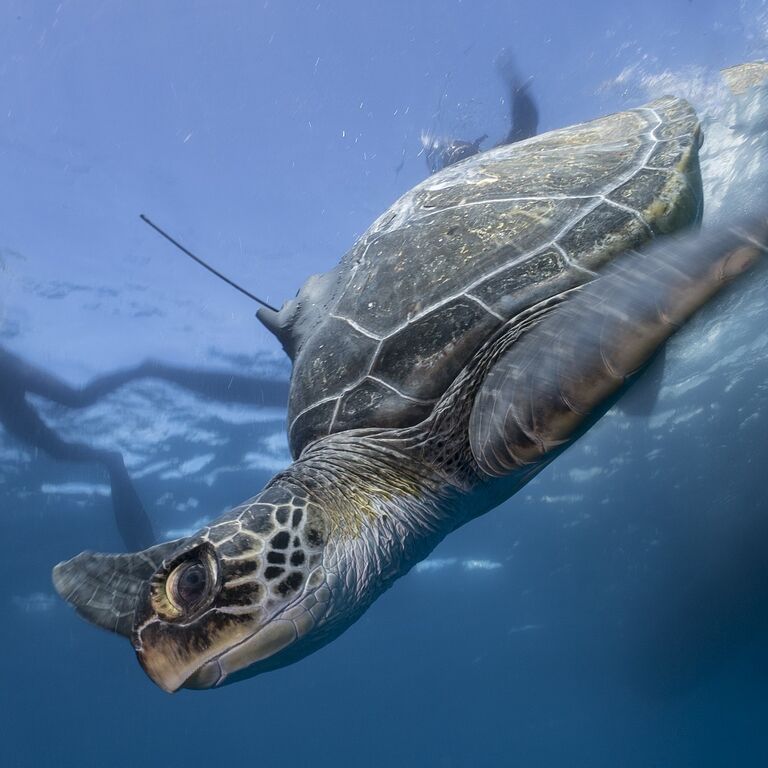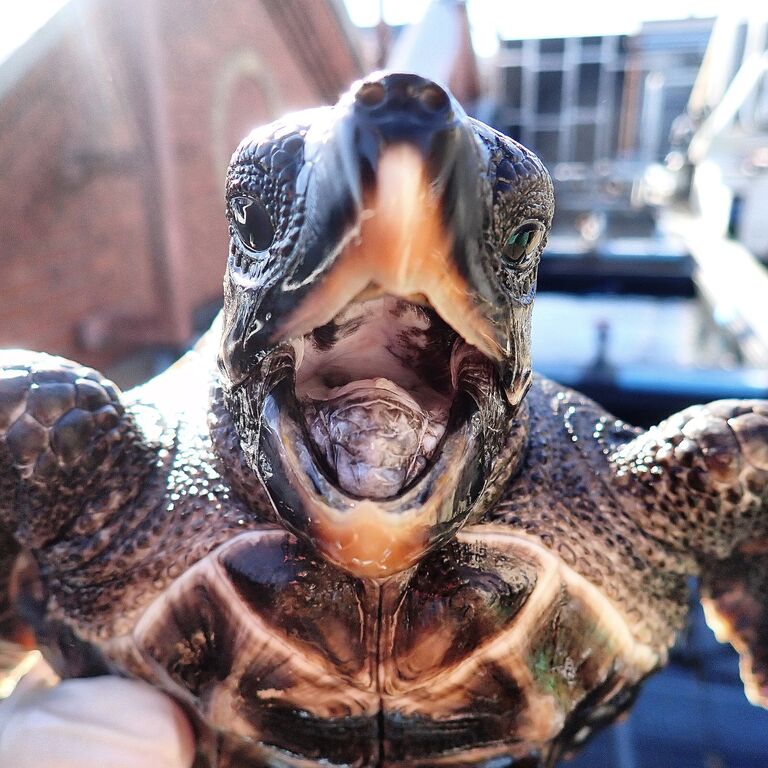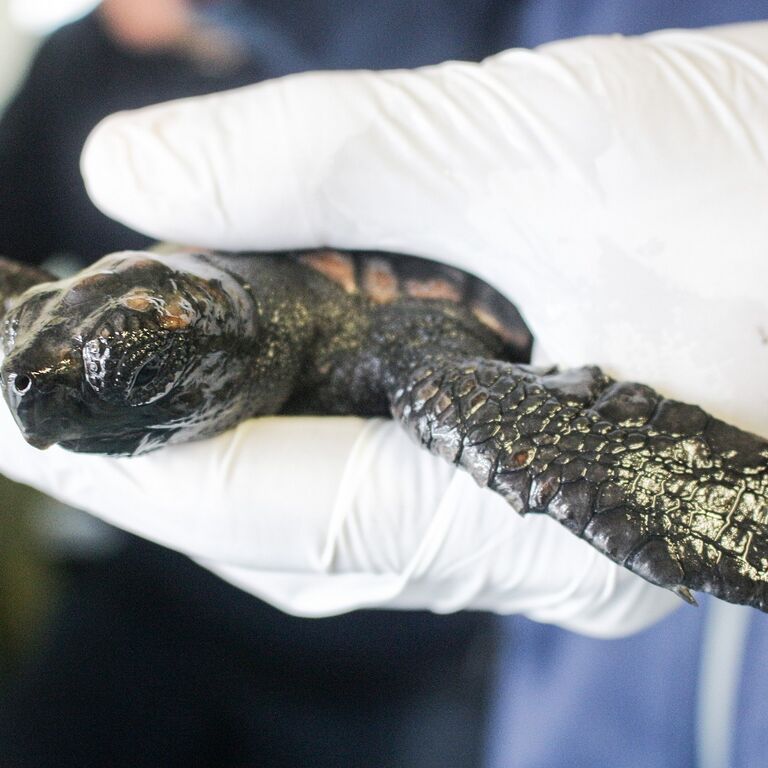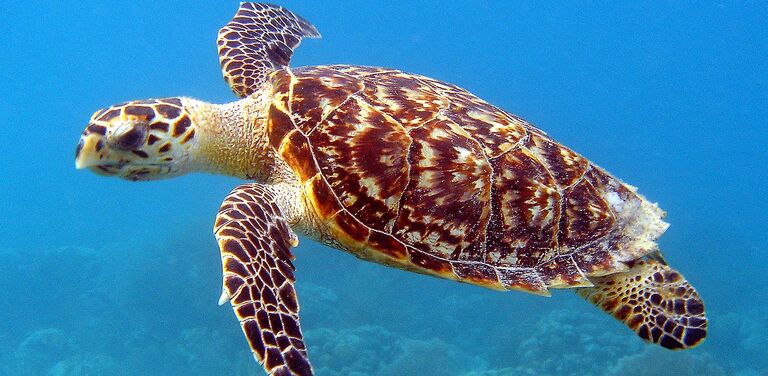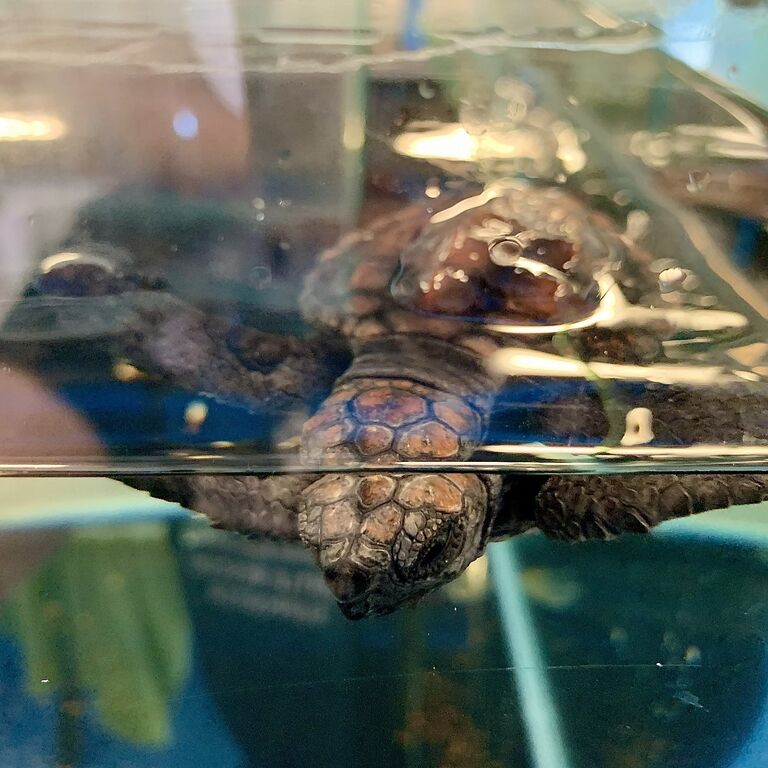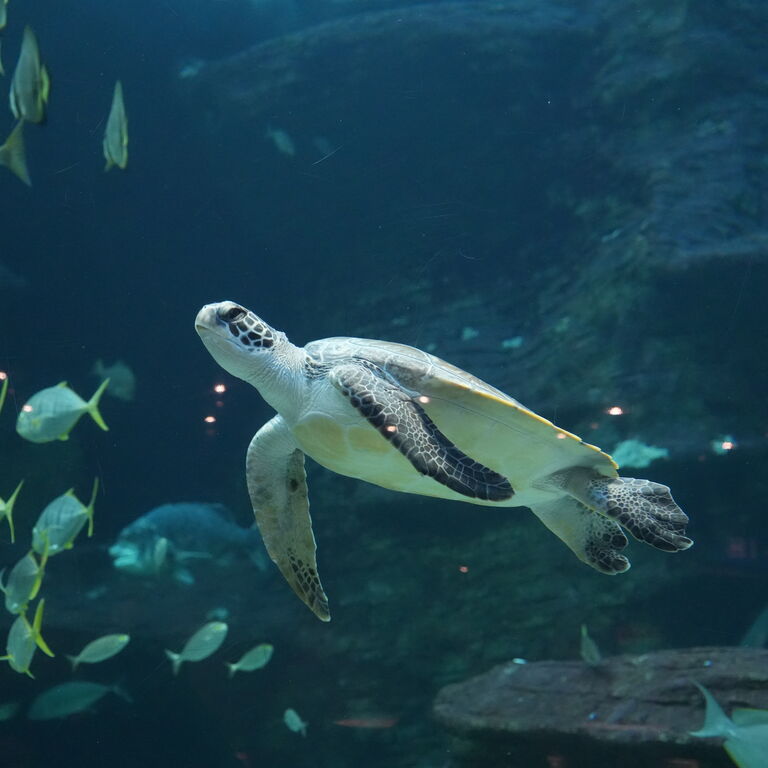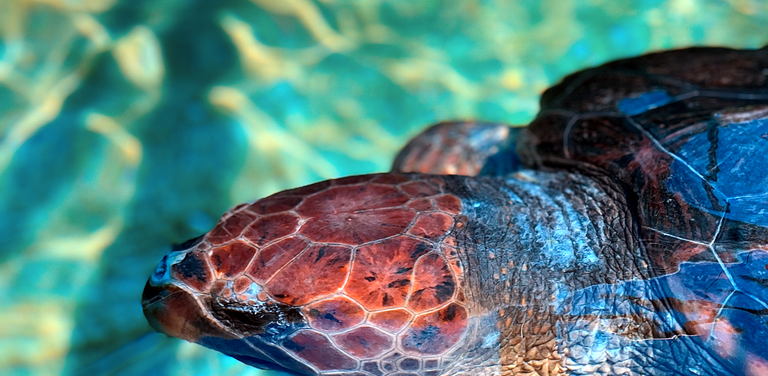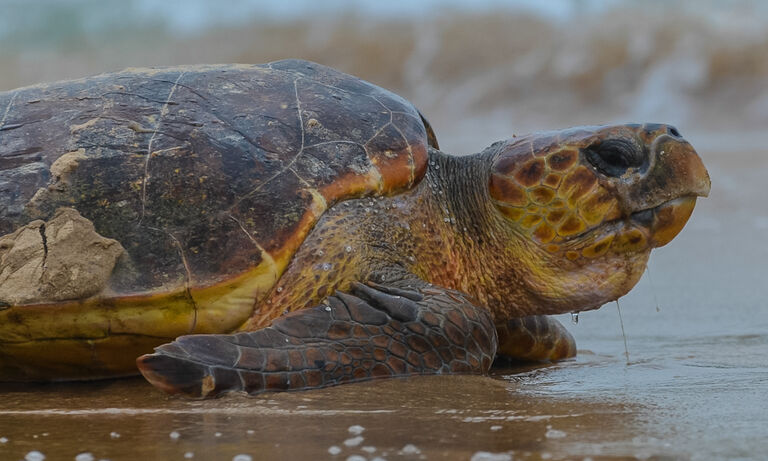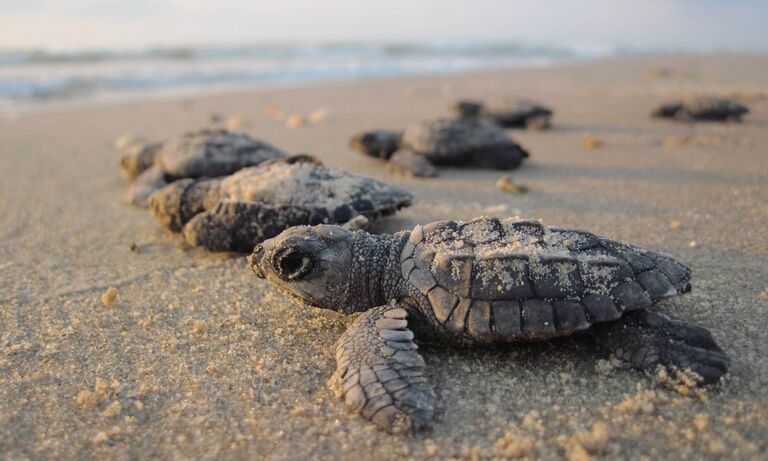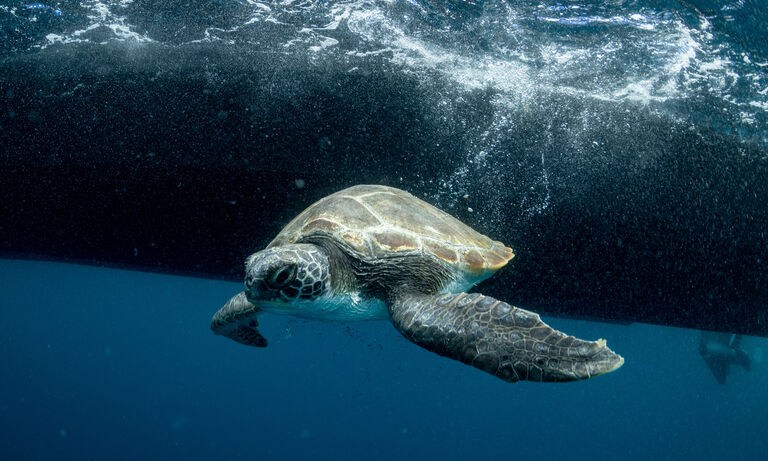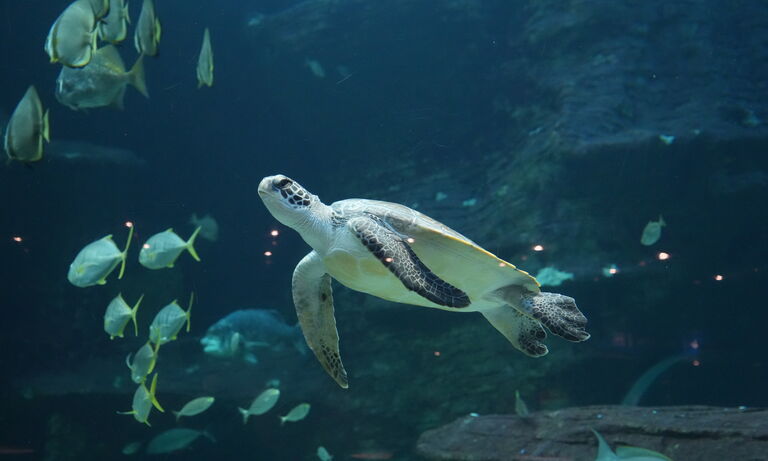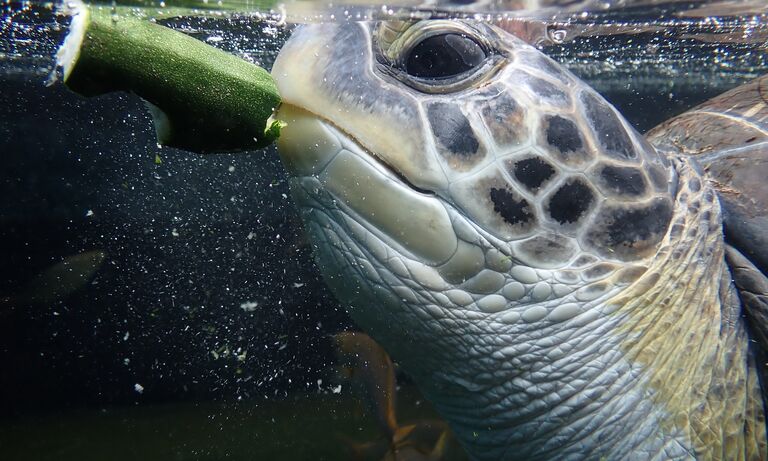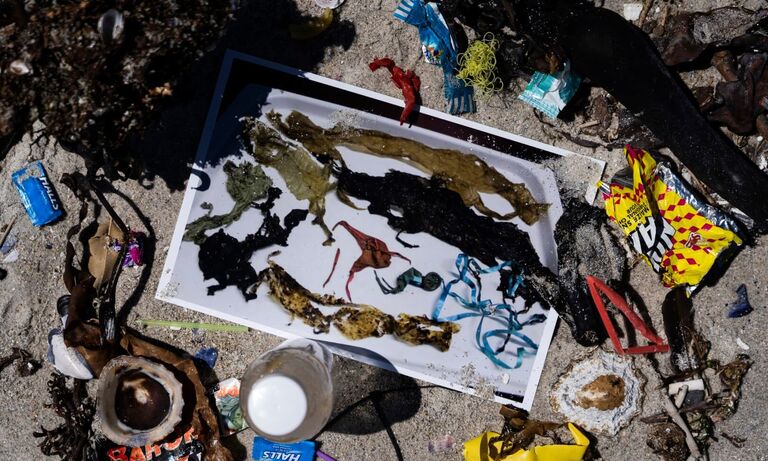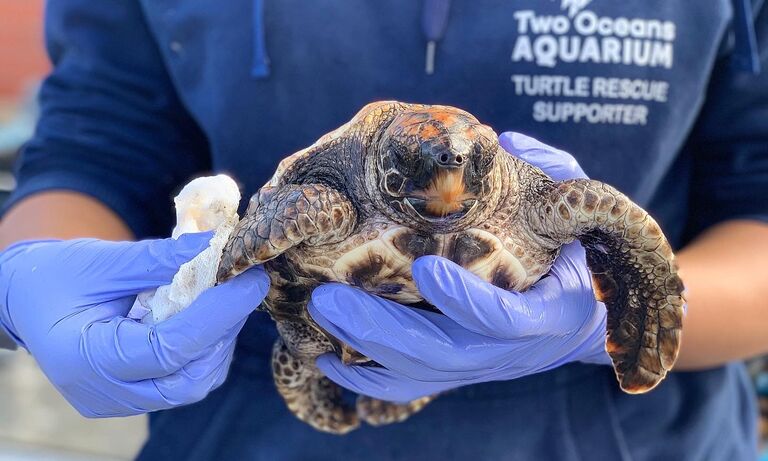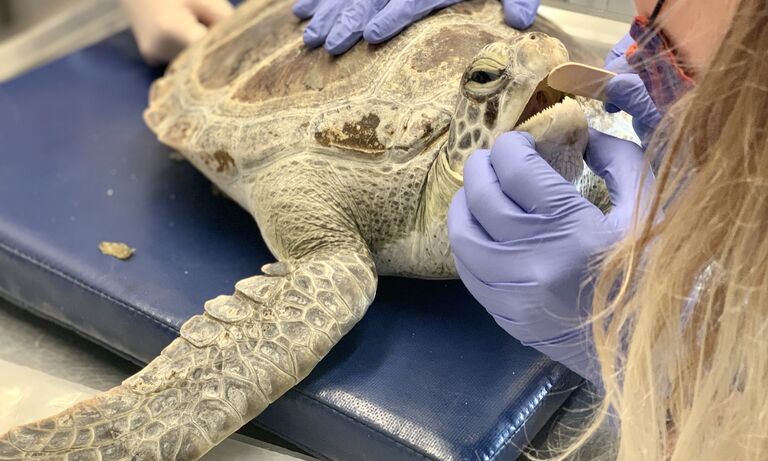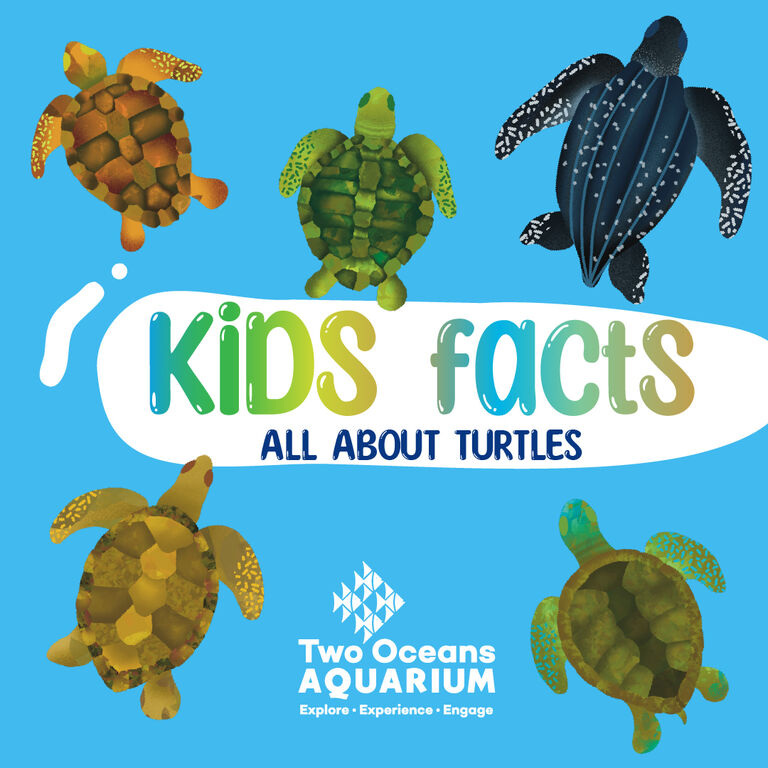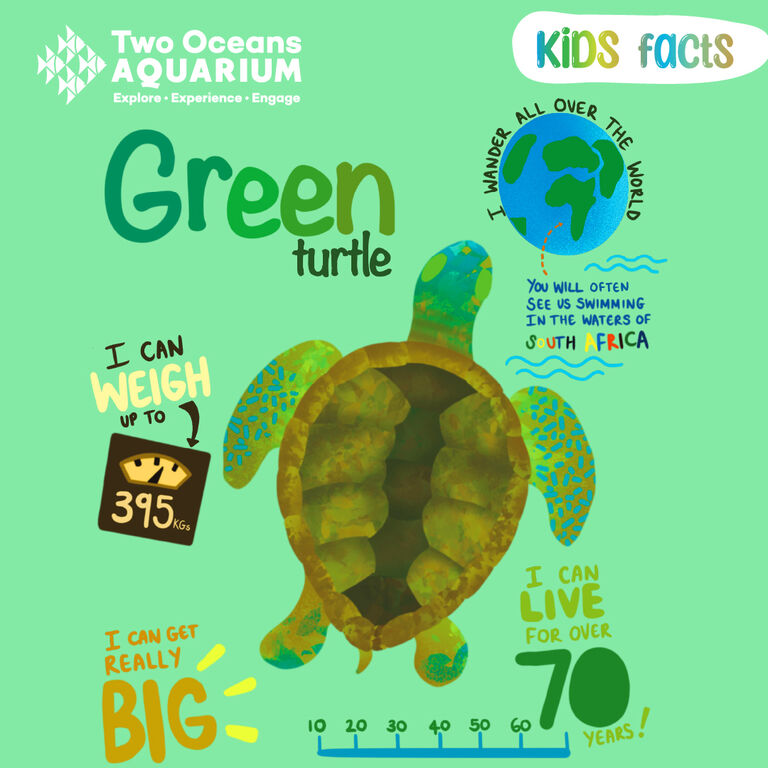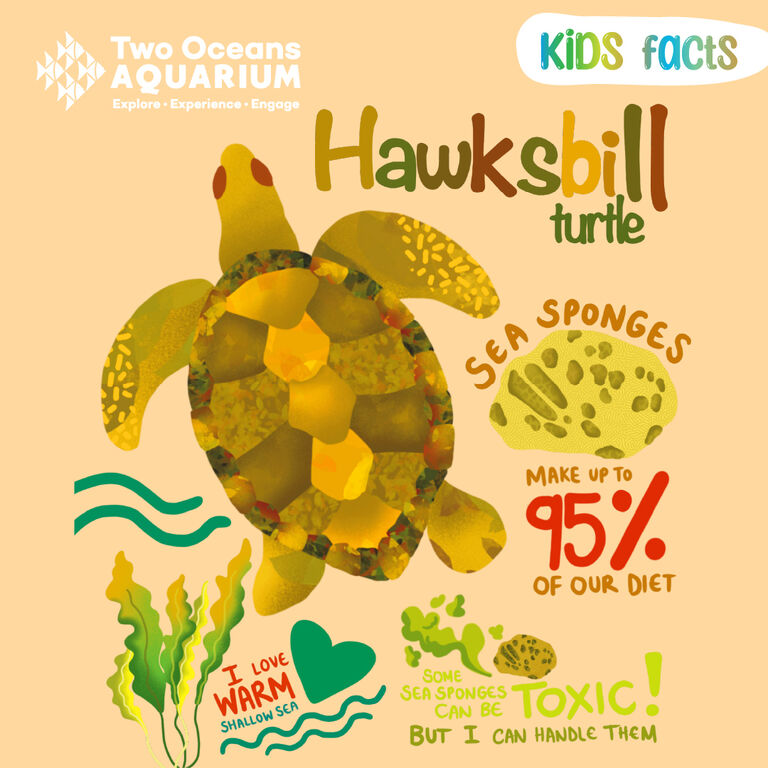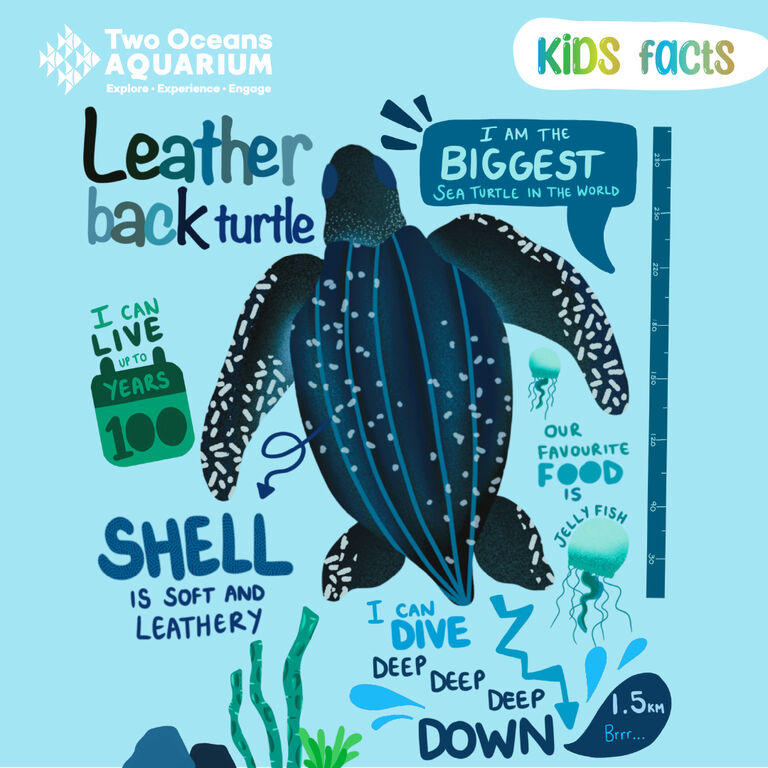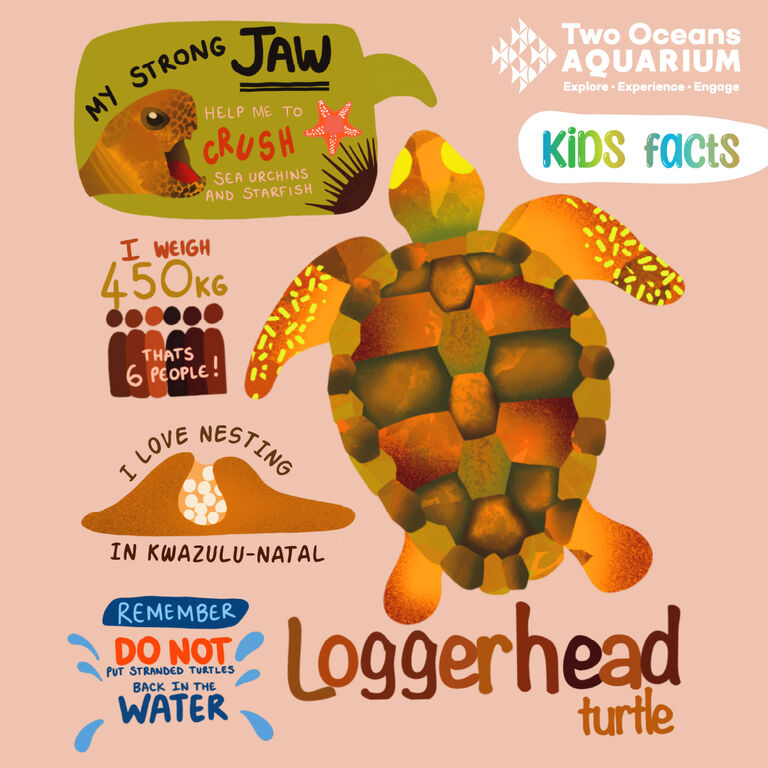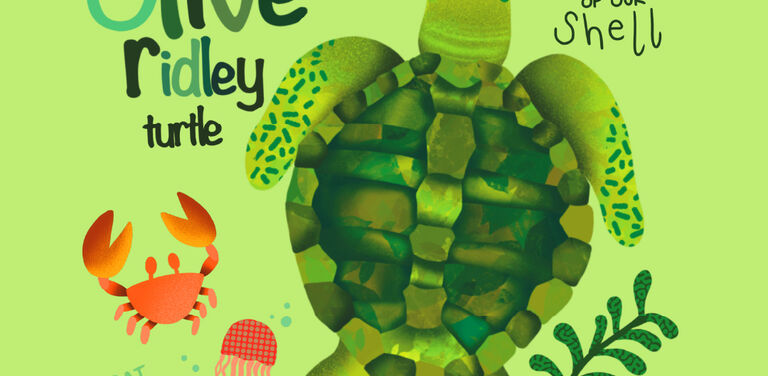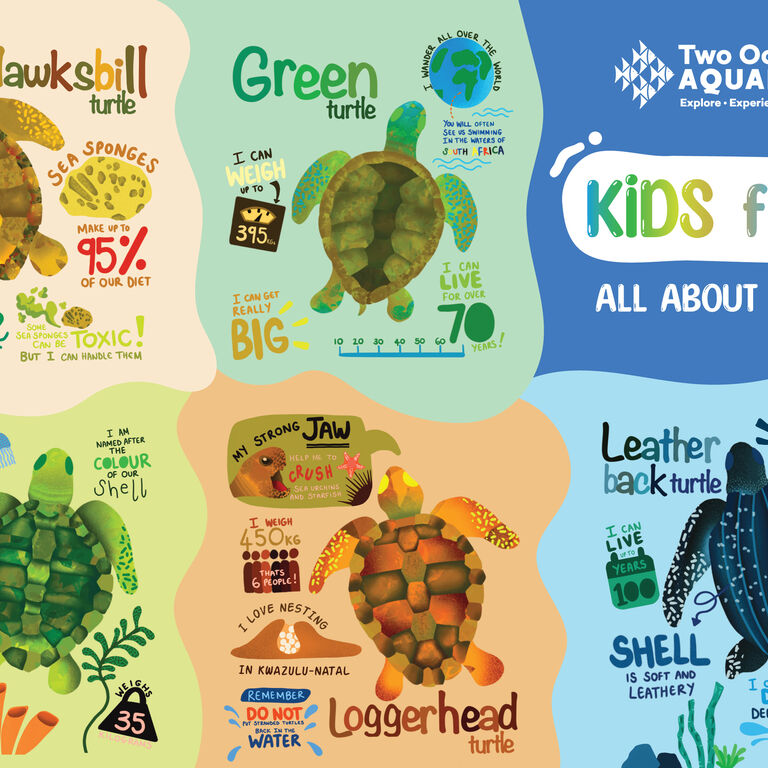Turtles
The first turtles appeared in the fossil record hundreds of millions of years ago and existed long before most other reptiles, including snakes and crocodiles. Sea turtles belong to the superfamily Chelonioidea, part of the order Testudines, which also includes tortoises, terrapins and freshwater turtles. There are only seven species of sea turtles on Earth, and all of them except two (the flatback turtle and Kemp's ridley turtle) visit South Africa. Sadly, all five species that occur in South African waters appear on the IUCN Red List of Threatened Species.
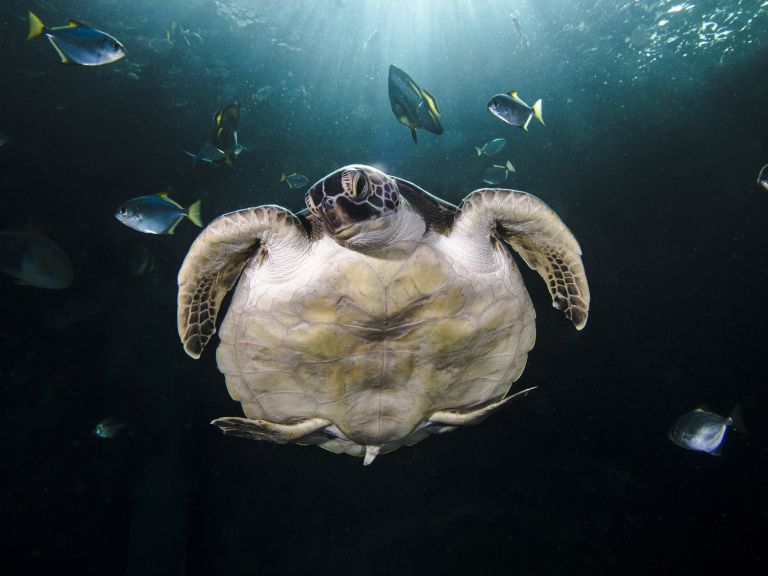
Nesting Season
The nesting season for most species of turtles takes place from October to February, coinciding with the presence of warmer oceanic waters. Sea turtles mate at sea, in breeding grounds that are near the beaches from which they emerged as hatchlings. This instinct is called natal homing and occurs in all sea turtle species. Male sea turtles are quite aggressive during mating season and often try to mate with multiple females. After mating, the females make their way to shore where they pull themselves above the high-tide line to lay their eggs. Using their front flippers, females dig a large hole called a "body pit", and with their back flippers, they dig an "egg chamber" where they deposit up to 120 soft-shelled eggs. They then cover the hole and return to the sea.Hatchlings
The eggs incubate for approximately 60 days and all hatch at the same time. For three to four days, the hatchlings wait for their shells to harden, after which they emerge from the sand and head to the shore. They navigate using a light source such as the horizon or the moon while dodging the threat of predation by crabs or other predators. Once in the water, the hatchlings swim out into the warm Agulhas current, where they begin a multi-day swimming frenzy during which they swim continuously to get as far from shore as possible. During this time, they survive off the energy from their egg yolk. Approximately one in 1000 will survive to maturity.The Lost Years
An entire decade could pass between the time hatchlings take their first swim until they return to coastal waters to forage as juveniles. These years are known as "the lost years" due to the sea turtles' whereabouts being largely unknown. During this time, the hatchlings are transported by strong currents to open-ocean habitats, where they live in flotsam, such as brown algae mats, and eat omnivorously.From Juveniles to Adults
After this oceanic period, juvenile sea turtles move into coastal feeding areas to finish growing. These feeding grounds offer abundant food but also host more predators. Therefore, the turtles wait to enter these areas until they reach the juvenile stage when their bodies are larger and less of an easy target for predators. Juveniles will roam coastal waters for as long as a few decades. When they have reached maturity and have acquired sufficient resources, the now adult turtles migrate to breeding grounds.
Fun facts about turtles
- Female turtles return to the same beach every season to lay their eggs. Guided by the earth’s magnetic field, they are oriented towards the beaches that they imprinted on as hatchlings.
- Hawksbill turtles store toxins in their flesh, making them poisonous to predators and immune to poisons in sponges and jellyfish.
- The sex of the hatchlings is determined by the temperature of the clutch during the first three to four weeks of incubation.
- All seven species of turtle are threatened with extinction, mainly due to various human activities.
- Sea turtles' beaks are made of keratin; the same material as your fingernails.
What is a sea turtle?
All sea turtles have ribs that are modified to form bone or cartilage shells. The turtle shell has a top (carapace) and a bottom (plastron), which join together along each side of the body to create a rigid skeletal box. They cannot exit their shells like some other reptiles. Their wide flippers are adapted for swimming, holding onto prey, mating, and nesting behaviours. Sea turtles are exquisitely adapted to life in the oceans. They can best hear low notes and are sensitive to vibrations in the water and on land. They are air-breathing animals and need to hold their breath for long periods. Thus, turtles can fully inflate their lungs and draw off as much oxygen as possible. When sleeping or hibernating on the sea floor, they have wonderful adaptations for surviving for hours underwater.Habitats and lifestyles
Sea turtles may appear clumsy and slow on land, but they are powerful swimmers. Most species are highly aquatic, only appearing on coastal beaches to lay eggs and spending the rest of their time in the ocean. Turtles migrate between feeding and breeding areas, often travelling incredibly long distances between each. Leatherback turtles travel an average of 5900 km each way. Turtles spend most of their time in water and can rest underwater for up to five hours at a time before popping to the surface to breathe. Their bodies are adapted for swimming, with streamlined shells, forelimbs modified as flippers and hind feet as large, webbed rudders. Sea turtles have a range of dietary preferences, although most species are omnivorous as hatchlings. Carnivorous turtles feed on crabs, shellfish and jellyfish, while omnivorous and herbivorous turtles eat seaweed, sponges, sea cucumbers and other plants.Human threats
Unfortunately, global sea turtle populations are vulnerable to human-induced threats. Sea turtles are harvested for both human consumption and the trade of their parts, such as “tortoise-shell” products from the hawksbill turtle. The plastic crisis also poses huge threats to turtles, which often mistake floating plastic for jellyfish and can choke on these materials. Lost or discarded fishing gear (or ghost gear) is another danger: it can entangle turtles and prevent them from swimming or feeding. We can make a difference by avoiding single-use plastics, cutting loops in circular products, participating in beach clean-ups, and generally caring for our oceans.
Turtle Conservation Centre
About our work
One out of 1 000 turtle hatchlings survive to adulthood - these figures are worsening due to increased pollution, climate change, and other human-induced hazards. The Two Oceans Aquarium Foundation's Turtle Conservation Centre contributes to the recovery of global sea turtle numbers by rehabilitating stranded turtles. "Rescue, Rehabilitate, and Release": the Centre is dedicated to these core aims. Stranded turtles are rescued and brought to the team, who work around the clock to return them to health. The ultimate goal is for each turtle admitted to the programme to be released, and the Turtle Conservation Centre has an incredible 85% release rate.What work do we do?
In summer, thousands of turtle hatchlings enter the warm Agulhas Current in northern KwaZulu-Natal. Some hatchlings wash up on the Western Cape coastline, cold and weak. Our team provides these stranded hatchlings with medical care and time to rest before they are released, usually in the following summer. Sub-adult and adult turtles also strand in the Western Cape, often with extensive physical injuries or even plastic ingestion. These turtles typically require months of intensive care. Most are satellite tagged before release, and through tagging, we know that most re-adapt to life in the ocean well. The data collected from this work contributes to the global knowledge base of turtle numbers and several postgraduate publications.Turtle Rescue Network
Rescuing stranded sea turtles depends on the support of many people and organisations along the Western Cape coastline - the Turtle Rescue Network. Typically, stranded turtles are found by normal beachgoers. Turtle Network Points are situated all over the Western Cape's coastline, from Lamberts Bay all the way to Gqeberha. The Two Oceans Aquarium Foundation works closely with numerous organisations, including the National Sea Rescue Institute (NSRI), the Department of Forestry, Fisheries and the Environment (DFFE), and more. When a beachgoer encounters a stranded turtle, the Turtle Network Points provide drop-off/ collection points for stranded turtles, from where they are transported to the Turtle Conservation Centre.Stranding season
Last year, our Turtle Conservation Centre was inundated with stranded turtle hatchlings that had washed ashore after unseasonal and intense storms hit the Western Cape coastline. Before they knew it, our turtle team had over 600 turtle hatchlings to care for – almost five times more than a typical stranding season.Join our turtle team as they share the inspiring journey of these vulnerable hatchlings, from the moment they were stranded to their triumphant return to the ocean. This is what turtle conservation is all about – and it’s worth celebrating!
